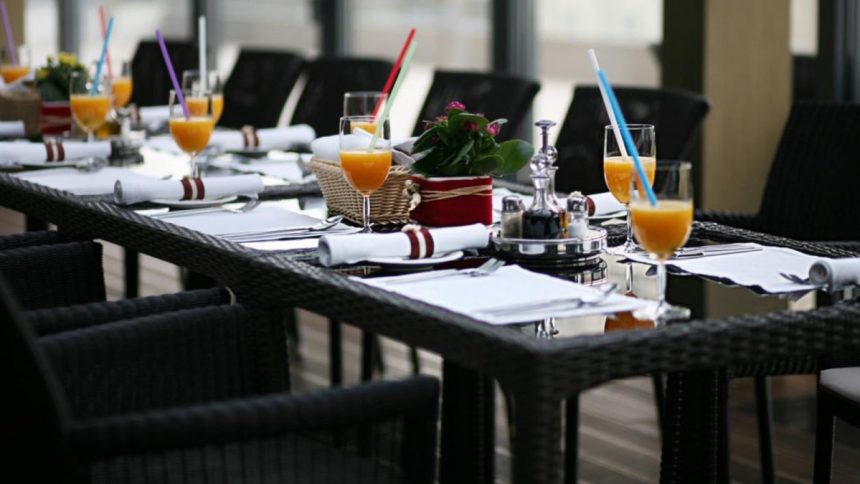Hosting a dinner party for colleagues is not just about impressing them with your culinary skills—it’s about creating an environment where comfort meets professional camaraderie. Whether you’re aiming to foster better relationships or celebrate a recent team achievement, the stakes feel high but manageable with the right approach. Let’s delve into how to set the stage for an evening where your colleagues enjoy the meal and the thoughtfulness behind it.
Setting the Stage for Success
The first step in hosting a memorable dinner party is to lay the groundwork for a successful evening. This means considering what you’ll serve and how the evening will flow from the moment your guests step through your door until the last goodbye. You want to create a welcoming atmosphere that reflects both your personality and respect for your professional relationships. This involves everything from the cleanliness of your space to the ambiance that greets your guests. Ensuring everyone a smooth, enjoyable experience starts with meticulous planning and attention to detail.
Crafting the Perfect Atmosphere
As you plan your dinner party, think about the overall vibe you want to create. This doesn’t mean you need to overhaul your dining area or living room, but it does involve some strategic adjustments to make the space more inviting and comfortable. Begin with lighting—soft, warm lights can make the space feel cozy and relaxed. Next, consider music; a low background playlist of jazz or acoustic covers can gently elevate the mood without overpowering conversation.
Then, there’s the decor. This is where you introduce the perfect color scheme that complements both the season and the evening’s tone. If it’s autumn, think warm oranges, browns, and creams. Fresh greens, yellows, and blues can brighten your space for a spring gathering. These colors can appear in your tablecloth, napkins, and even small floral arrangements. The key is cohesion—each element should contribute to a unified look that feels intentional and inviting.
The Menu: Balancing Sophistication and Simplicity
When deciding what to cook, the goal is to balance sophistication with simplicity. You want impressive dishes that don’t require you to spend the entire evening in the kitchen. Start with a straightforward appetizer that can be prepared ahead of time, like bruschetta or stuffed mushrooms. For the main course, opt for dishes that can serve multiple people and are easy to assemble, such as a roast or a hearty, gourmet pasta dish.
It’s also important to consider your guests’ dietary preferences and restrictions. Offering a vegetarian option or a simple modification to accommodate allergies shows thoughtfulness and care. As you plan your menu, remember that each dish should complement the others, creating a harmonious progression of flavors from start to finish.
The Heart of the Party: Main Course Mastery
When it comes to the main event—the dinner itself—choosing a central dish that resonates with elegance yet simplicity is crucial. Opt for a main that can mostly be prepped ahead of time, such as a beef tenderloin or a baked salmon filet adorned with herbs. These dishes cater to a broad palate and ensure you’re not chained to the kitchen, missing out on engaging with your guests.
Pair your main dish with two or three sides that can be easily reheated or served at room temperature. A vibrant, seasonal salad, a creamy risotto, or roasted vegetables can complement your centerpiece without overshadowing it. The art of this course is not just in the flavors but in the presentation. As you serve, ensure each plate is arranged neatly—a visual treat that invites your guests to dive in enthusiastically.
Elevating the Evening: Exceptional Table Settings
This brings us to perhaps the most visually impactful part of your evening: the table setting. Here, beautiful serving pieces truly bring everything to life. Invest in high-quality, unique serving ware that reflects the tone of your professional gatherings. Whether it’s a set of sleek, modern plates or antique silverware that tells a story, each piece should add to the overall aesthetic of your table.
The layout of your table is equally important. Each setting should include all the necessary utensils, a clean, crisp napkin, and perhaps a small name card if you wish to assign seating. Centerpieces should be low enough to encourage easy conversation across the table. Opt for simple arrangements that do not clutter the space but enhance the intimacy of the setting. This level of detail shows your guests that no aspect of their experience has been overlooked.
The Sweet Ending: Dessert and Digestifs
No dinner party is complete without a dessert. The perfect dessert offers a sweet closure to your meal without being too heavy. Consider individual portions like chocolate lava cakes or classic panna cotta, which can be prepped ahead and finished off as the evening progresses. Pair your dessert with a suitable digestif, such as espresso or a neat spirit, which not only complements the sweet treat but also helps settle the meal, inviting further relaxation and conversation.
Finishing Touches: Personal and Professional Flair
As the evening winds down, including a small, personal touch that guests can take with them is nice. A simple, hand-written note thanking them for their company or a small bag of homemade treats can leave a lasting impression. These gestures make the gathering memorable and show a level of care that goes beyond professional courtesy.
Mastery of the Memorable Evening
Hosting a dinner party for your colleagues is an art that combines culinary skill, aesthetic presentation, and personal warmth. Each element, from the menu planning to the final thank-you note, contributes to a night where professional relationships can strengthen in a comfortable, personal environment. The goal isn’t just to impress but to create an atmosphere that fosters genuine connections and leaves your guests looking forward to the next gathering.
Lynn Martelli is an editor at Readability. She received her MFA in Creative Writing from Antioch University and has worked as an editor for over 10 years. Lynn has edited a wide variety of books, including fiction, non-fiction, memoirs, and more. In her free time, Lynn enjoys reading, writing, and spending time with her family and friends.















